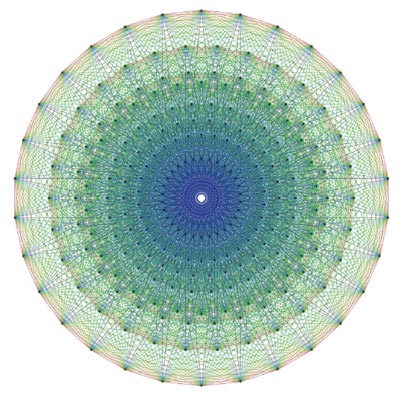Open Neighborhood Seminar
Harvard University Math Department
Fall 2019
September 11
- Speaker: Joe Harris (Harvard)
- Title: How many lines meet each of 4 given lines in 3-space, and why it matters
- Abstract: Basic linear algebra tells us how pairs of subspaces of a vector space can intersect. It says less about intersections of multiple subspaces. For example, given four 2-planes W_1, W_2, W_3 and W_4 of a four-dimensional vector space W, we can ask whether there are any 2-planes that have nonzero intersection with all four (the problem that translates into the question of the title). In the late 19th century, Hermann Schubert developed a "calculus of conditions" to answer these questions. It's a beautiful theory, which is still an object of research today, but beyond that it's had an enormous impact on the development of geometry, for example inspiring Poincare to introduce the notions of cohomology and cup product. In this talk I'll give a very brief overview both of the Schubert calculus and the developments to which it gave rise.
September 25 and 26, as part of the "Why do math?" series
- Speaker: Francis Su (Harvey Mudd)
- Talk 1: Mathematics for Human Flourishing
- Talk 2: Sperner's lemma: topological combinatorics solving social science problems
October 9
- Speaker: Kate Stange (Colorado)
- Title: Quantum computers and the future of cryptography
- Abstract: When quantum computers are engineered to scale, quantum algorithms will be able to break our current cryptographic protocols. How do quantum computers work and how do they accomplish this? And what should we do about it? I'll introduce the basics of quantum computing, explain how a quantum computer can factor big numbers and break current cryptography, and then I'll introduce some of the front-runners for the future of "quantum-safe" cryptography (including elliptic curve isogeny-based cryptography), and explain why we think these might be secure.
- (Materials from Kate's talk here. Video Part 1 and Part 2.)
October 23
- Speaker: Marius Lemm (Harvard)
- Title: Why doesn't an electron fall into the nucleus?
- Abstract: In physics class at school, we are taught that matter is composed of atoms. We learn that every atom has at its center a positively-charged nucleus, around which negatively-charged electrons orbit, just like planets orbiting the sun. However, we also learn that positive and negative charges attract. So...why doesn't an electron simply fall into the nucleus? This is no small question as the answer holds the key to the stability of all matter around us. It turns out that the answer lies in quantum mechanics. This lecture will give a crash course on the mathematics describing quantum mechanics and in particular pin down the notion of "uncertainty principle" mathematically. It will conclude with a proof that a quantum-mechanical electron does not fall into the nucleus, hopefully prompting a sigh of relief from the audience.
November 13
- Speaker: Ellen Eischen (Oregon)
- Title: An Introduction to the Bernoulli Numbers, from Pythagoras to Present
- Abstract: Consider these basic questions: What can we say about finite sums of powers of consecutive whole numbers? What can we say about whole number solutions to polynomial equations? What about factorizations into primes? What about values of the Riemann zeta function? In interesting families of examples — elementary and sophisticated, ancient and modern — "Bernoulli numbers" unify these seemingly unrelated questions. After an introduction to the Bernoulli numbers, we will explore related developments for these intertwined problems, which lead to central challenges in number theory and beyond.
November 20
- Speaker: Brooke Ullery (Harvard)
- Title: Polynomials vanishing on points in the plane
- Abstract: We all know that any two points in the plane lie on a unique line. However, three points will lie on a line only if those points are in a very special position: collinear! More generally if Z is a set of k points, we can ask what the set of polynomials of degree d that vanish on all the points of Z looks like. The answer depends not only on the values of k and d, but also on the geometry of Z. This question, in some form, dates back to at least the 4th century. We will talk about several attempts to answer it throughout history and some surprising connections to modern algebraic geometry.
Mailing list: You can subscribe to the seminar mailing list here.
Organizers: Ana Balibanu (ana@math.harvard.edu) and Sebastien Picard (spicard@math.harvard.edu).
